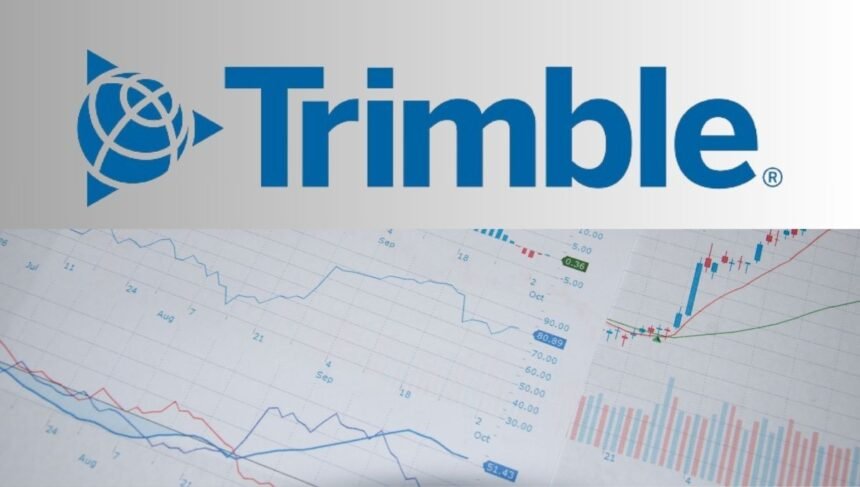The stock market has staged an impressive end-of-year rally, with the S&P 500 surging 12.5% since November 1st. While many stocks have participated in this rally, some still have significant upside potential heading into 2024. One such stock is Trimble Inc. (NASDAQ: TRMB).
Trimble provides innovative hardware and software solutions that enhance productivity, quality, safety, transparency and environmental sustainability across a diverse range of industries. From construction and agriculture to transportation and surveying, Trimble is empowering digital transformation across the global economy.
However, like many companies, Trimble has faced cyclical headwinds in 2022 that have hampered its growth trajectory. The stock is down over 45% from its three-year highs, presenting an attractive entry point for long-term investors.
Here are three reasons why Trimble still has room to run in 2024:
1. The business model is evolving toward more recurring revenue
In the past, Trimble relied heavily on hardware product sales. But over the last decade, the company has strategically transitioned toward a more software and services focused model.
Today, over 50% of Trimble’s total revenue is recurring. This includes revenue from software subscriptions, cloud services, and ongoing maintenance contracts. Recurring revenue provides stable and predictable cash flows that are less susceptible to macroeconomic fluctuations.
As Trimble continues transitioning towards a software-as-a-service (SaaS) model, it should command a higher valuation multiple befitting of a SaaS company. This represents significant upside for the stock.
2. Secular growth trends remain very strong
Trimble is enabling foundational technology transformations like the Internet of Things (IoT), automation, and machine learning. Its solutions are mission-critical, helping customers extract more value from their operations.
For example, Trimble’s automation solutions help construction companies modernize workflows. Its precision agriculture products optimize crop yields. And its fleet management offerings improve transportation efficiency.
These secular trends—automation, digitalization, sustainability—will only accelerate over the next decade. As a leader in its niche markets, Trimble stands to benefit tremendously from these tailwinds.
3. The valuation is compelling relative to history
Due to the cyclical downturn and growth headwinds in 2022, Trimble shares look attractively priced today. The stock trades at:
- Forward P/E of 19.7 vs 5-year average of 33.2
- Forward P/S of 3.4 vs 5-year average of 3.7
When growth rebounds, the valuation gap should close quickly. Trimble generated 25% revenue growth as recently as 2021, so its growth engine remains intact despite short-term challenges.
The end-of-year rally has been a head fake for many stocks. But Trimble’s rally appears fundamentally justified. As macro conditions improve in 2023-2024, this leader in industrial digitization is poised to reaccelerate growth and reward investors.
What to Watch Going Forward
Trimble reports Q4 2022 earnings results in February, which will provide critical insights into underlying demand trends and management’s 2023 guidance. Investors should watch for stabilization in Trimble’s core agriculture, construction, and transportation markets.
Margin improvement is also key as Trimble aims to preserve profitability amidst the downturn. Finally, continued growth in recurring revenue will signal the success of Trimble’s business model transition.
While near-term turbulence remains, Trimble has levers to drive multi-year growth. The company is emerging from this downturn as a more resilient, software-centric business. As macro conditions improve and secular tailwinds accelerate, Trimble appears poised to deliver strong returns for long-term investors.
Frequently Ask Questions
What does Trimble do?
Trimble is a technology company that provides hardware and software solutions across a diverse range of industries such as construction, agriculture, transportation, and surveying. The company’s products enable increased productivity, efficiency, safety, and sustainability.
Why has Trimble stock underperformed in 2022?
Like many companies, Trimble faced cyclical headwinds in 2022 that hampered its growth trajectory. Slowing demand in some of Trimble’s end markets such as agriculture and transportation weighed on financial performance. The stock is down over 45% from recent highs.
What is Trimble’s recurring revenue model?
Over 50% of Trimble’s total revenue now comes from recurring sources such as software subscriptions, cloud services, and maintenance contracts. This provides stable cash flows that are less susceptible to macroeconomic fluctuations. The transition to a software-centric model is a positive for the long-term growth outlook.
What secular trends benefit Trimble?
Trimble stands to benefit tremendously from secular trends like the Internet of Things (IoT), automation, digital transformation, and sustainability. Its solutions empower these technology transformations across diverse sectors. These tailwinds should accelerate in the coming decade.
Is Trimble stock undervalued right now?
Yes, Trimble stock looks attractively valued compared to historical levels and peers. It trades at a forward P/E of 19.7 versus a 5-year average of 33.2. The current valuation presents an attractive entry point for long-term investors.
What should investors watch with Trimble going forward?
Important things to monitor include end market demand stabilization, recurring revenue growth, margin improvement, and management’s guidance for 2023 and beyond. These metrics will provide insights into Trimble’s growth reacceleration potential.










